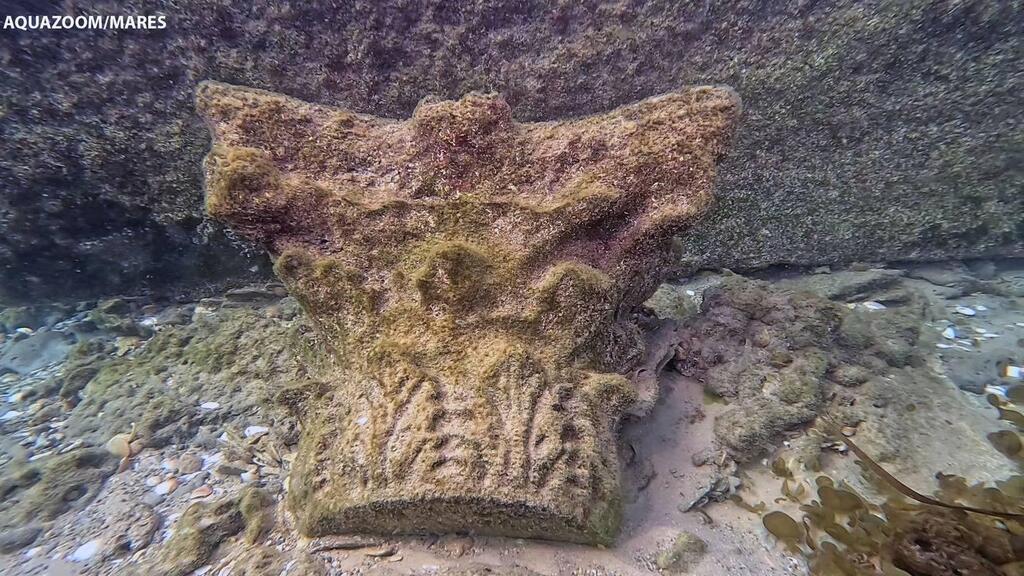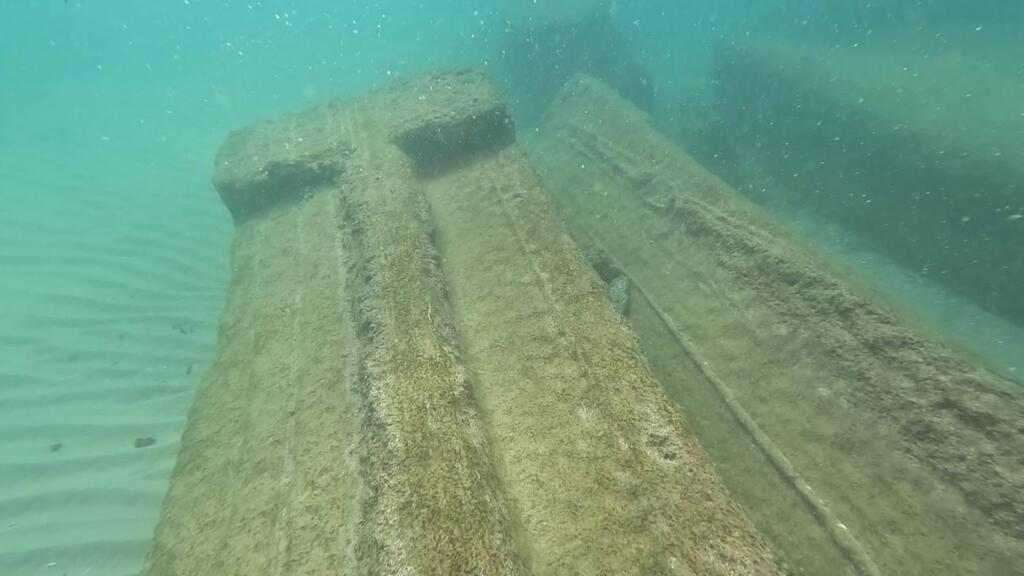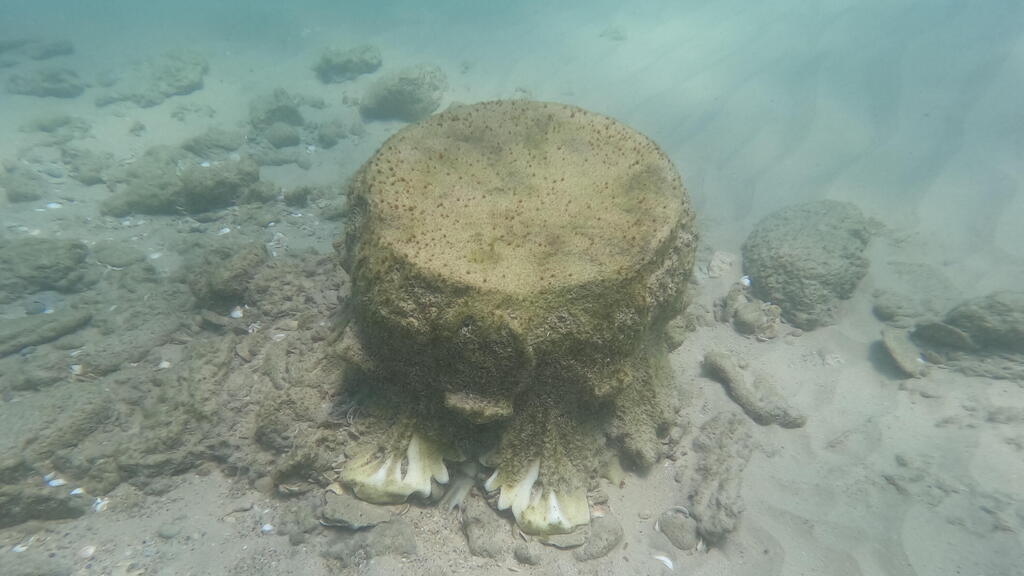Getting your Trinity Audio player ready...
(IAA)
A cargo of 200 artifacts from a ship that sank 1,800 years ago off the coast of northern Israel was discovered recently. The Israel Antiquities Authority described the find as a first of its kind in the eastern Mediterranean and dated it to the Roman period.
More Stories:
Archeologists found Corinthian column capitals adorned with vegetal motifs, that were partially carved, and marble columns, 6 meters, (nearly 20 feet) long. The valuable architectural artifacts were likely destined for the construction of an elaborate public building - a temple or perhaps a theater.
The find was discovered by Gideon Harris, a swimmer, who saw the artifacts on his swim in the sea and alerted the IAA. “We have been aware of the existence of this shipwrecked cargo for a long time,”, Koby Sharvit, Director of underwater archaeology at IAA said. “but we didn’t know its exact whereabouts as it was covered over by sand, and we could therefore not investigate it. The recent storms must have exposed the cargo, and thanks to Gideon’s important report, we have been able to register its location and carry out preliminary archaeological investigations, which will lead to a more in-depth research project,” he said.
From the angle of the cargo, archeologists believe the ship likely sank in a storm.
“Such storms often blow up suddenly along the country’s coast,” Sharvit said, “and due to the ships’ limited maneuvering potential, they are often dragged into the shallow waters and shipwrecked," he said.
“From the size of the architectural elements, we can calculate the dimensions of the ship; we are talking about a merchant ship that could bear a cargo of at least 200 tons. These fine pieces are characteristic of large-scale, majestic public buildings. Even in Roman Caesarea, such architectural elements were made of local stone covered with white plaster to appear like marble. Here we are talking about genuine marble,” Sharvit said.
“Since it is probable that this marble cargo came from the Aegean or Black Sea region, in Turkey or Greece, and since it was discovered south of the port of Caesarea, it seems that it was destined for one of the ports along the southern Levantine coast, Ashkelon or Gaza, or possibly even Alexandria in Egypt.”
The swimmer's find, Sharvit said, has led to resolving a long-lived research issue: “Land and Sea archaeologists have long argued whether the Roman period imported architectural elements were completely worked in their lands of origin, or whether they were transported in a partially carved form, and were carved and fashioned at their site of destination. The find of this cargo resolves the debated issue, as it is evident that the architectural elements left the quarry site as basic raw material or partially worked artifacts and that they were fashioned and finished on the construction site, either by local artists and artisans or by artists who were brought to the site from other countries, similarly to specialist mosaic artists who traveled from site to site following commissioned projects," he said.







